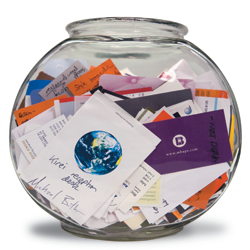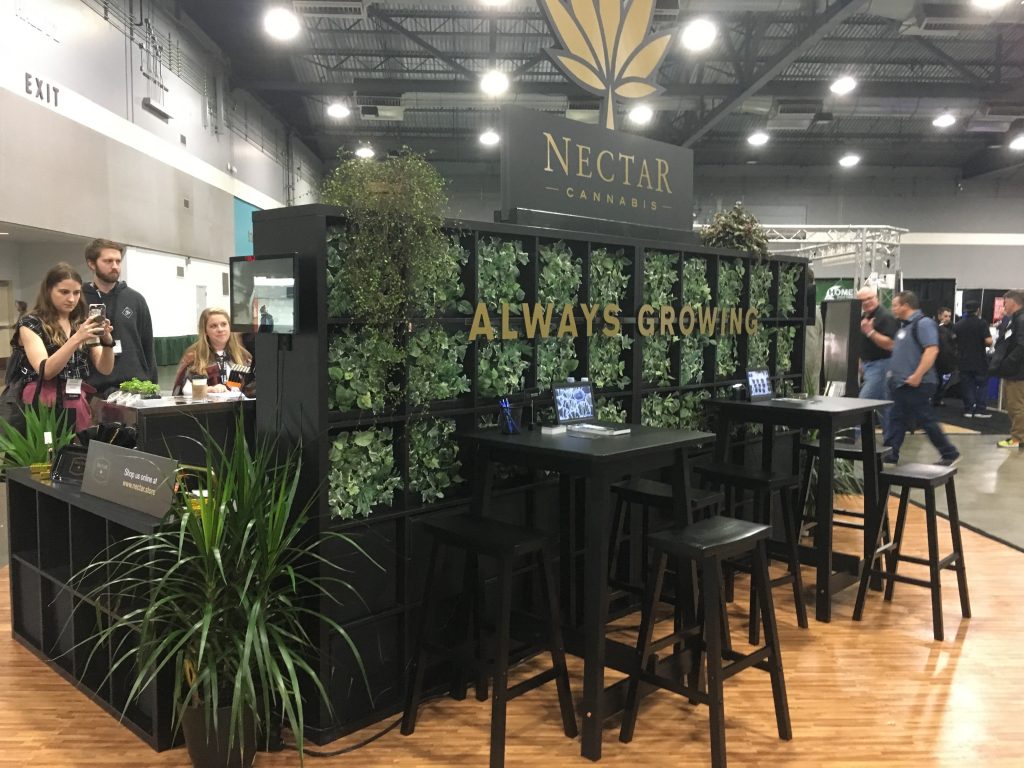Is Your Tradeshow Marketing Funnel Leaky?
The marketing funnel. It’s something I learned about years ago, but it’s interesting to reexamine now and then. Recently I attended the NAB Show in Las Vegas as a blogger and was asked by a few dozen companies if they could scan my badge. Once they scanned, I was put in the top of their tradeshow marketing funnel, even though they did exactly zero qualifying. See where this is leading?
When it comes to tradeshow marketing, the funnel does indeed get interesting. As in any type of marketing, there are things you can control and things you cannot. Scanning the badge of every person that comes through your booth does indeed capture name and contact information and will likely mean they’ll soon be getting emails from your company.

Let’s look at the tradeshow marketing funnel starting at the very top.
The first step – the top of the funnel where its widest – is the number of people attending a particular tradeshow that you’re setting up an exhibit. For the sake of argument and easy math, let’s say it’s 100,000 people.
Do the Math
If you are one of 2000 exhibitors, that means you’re vying for the attention of those 100,000 people along with 1,999 other exhibitors.
If the show is three days, 10 am – 5 pm, that means the show floor is open for 21 hours. If each attendee walks the floor an average of four hours a day and manages to visit one booth every five minutes, that means they are visiting (again this is hypothetical and on average) 12 an hour, or 48 a day, or 144 over the course of the show. If every attendee visited each exhibitor at the same rate, you’d get about 13.9% of the 100,000 attendees to stop by your booth, or 13,900 people. That’s 660 per hour, or about 11 per minute. If a visitor stops by a booth every 2 ½ minutes, these numbers double. But since people are unpredictable, let’s stay with the five-minute visit on average.
Now – if those numbers are even close to real, what are you doing to get their attention?
Are you giving out samples to visitors, doing product demos, having one-on-one conversations? Or are you just randomly scanning badges of every visitor even though they haven’t expressed any interest in your products other than standing within scanning distance of the booth.
Every one of those interactions will mean that each person will go into the top of the funnel, although admittedly they can’t be treated equally because some will be more interested than others, some will be more prepared to buy than others, and some are just kicking tires.
But they’re all in the marketing funnel. At this point we can treat them equally.
For argument’s sake, let’s say that for every ten that visit your booth, one expresses interest, enough interest to let them capture their contact information.
That means some 66 people per hour have made at least an initial commitment to let you invite them to the next step of the funnel. They may have opted into an email list, agreed to have their badge scanned, or had a conversation with someone in the booth. Again, assuming the show is open for 21 hours, you have approximately 1386 at the second level of your funnel.
Move People Through the Funnel
What do you do to move them along?
Here’s where the marketing funnel gets more interesting. Do you simply email them? Or do you call them one-on-one to assess their real need (or lack) to find out if they are a “hot” lead, “warm” lead or just a “cool” lead that will be put on the back burner and perhaps inserted into a drip campaign? Do you send them a sample? A PDF report of some sort?
An ideal tradeshow marketing campaign will have a number of options available at the show, and each interaction should assess the visitor’s desires and situation.
And let’s add one more step to the math.
Let’s say the average profit of your product is $10,000.
By adding up all the costs of your tradeshow appearance, you’re spending $100,000 for this particulate show. That means you need to sell 10 customers to break even. If your average profit is $1,000, you’ll need 100 customers.
Anything more than those numbers, and the Return on Investment on your tradeshow marketing plan is out of the red and into the black.
But let’s take it one more step.
Improving Funnel Results
Let’s say that for every customer that purchases your premium product continues to purchase other products from you for an average of 7 years. The lifetime value of that customer acquisition just increased substantially, which means the money you spent at the tradeshow to come into contact with her means a lot more.
And if they’re a really happy customer, they may end up referring a handful of new clients to you. Which makes that initial cost look better and better with each passing year.
The more tradeshows you exhibit at, the more people you put your products and services in front of. If you’re doing things right, or at least learning from any mistakes you’ve made over the years and made adjustments, your tradeshow marketing funnel will become less leaky. You’ll retain more of the people that enter at the top.
We all have leaky marketing funnels. But by being aware of what works, what doesn’t and doing your best to maximize your returns, your results will keep improving. But it means paying close attention at every step. Keep asking your prospects what they need to learn, do they want to hear more, do they want a free sample or another product demo, or how they may want to interact with you and your company.




